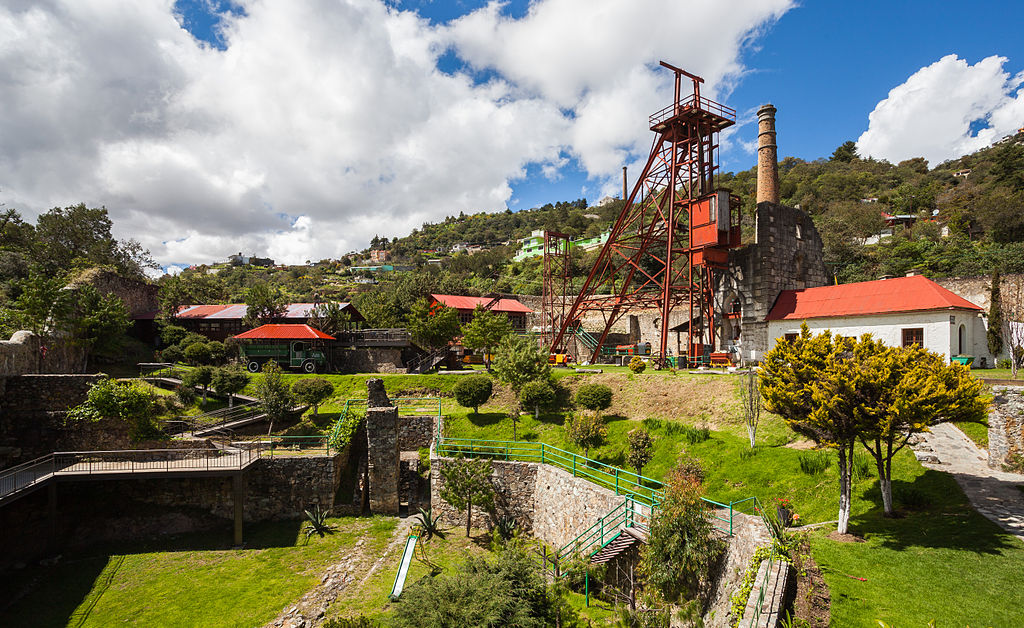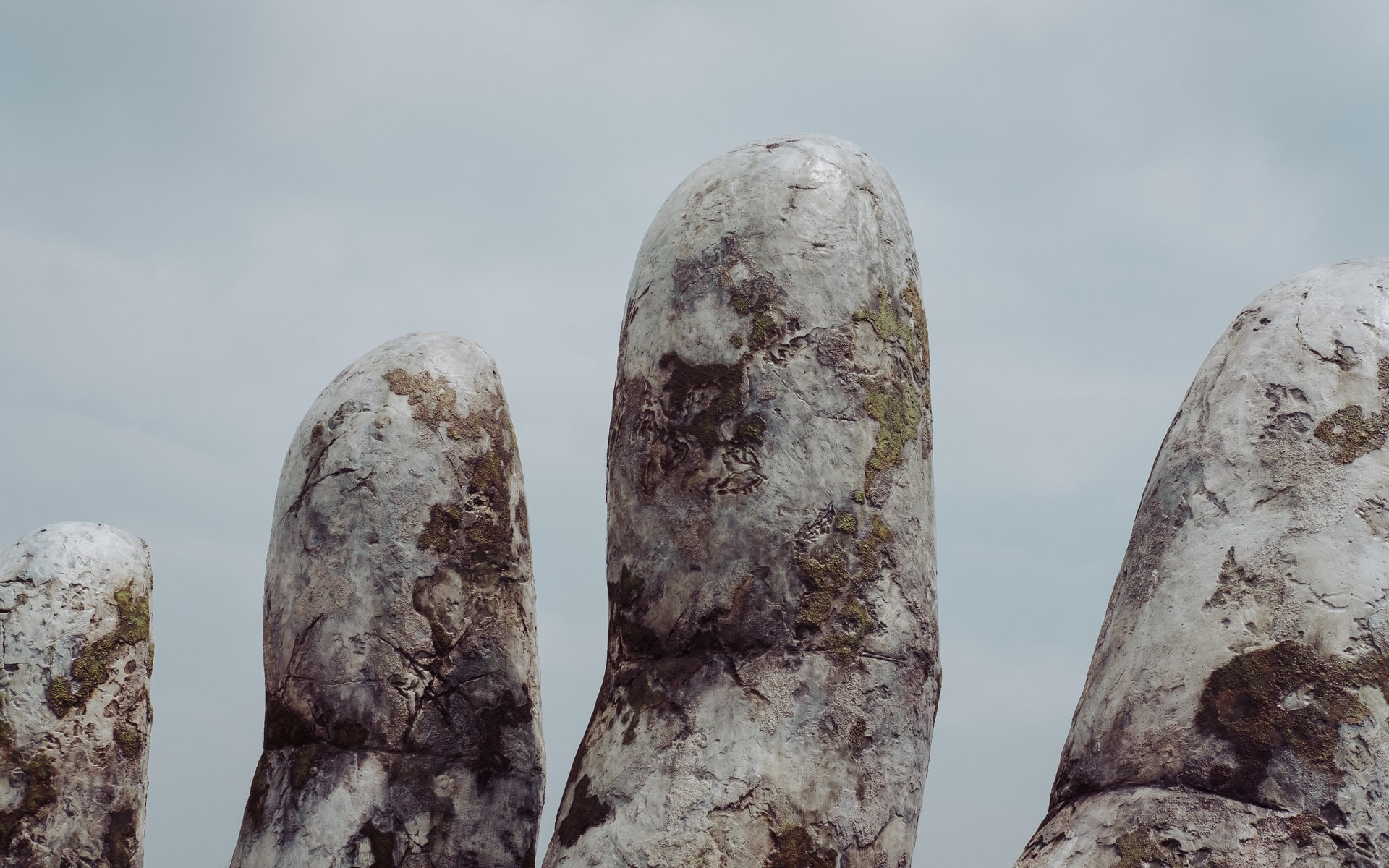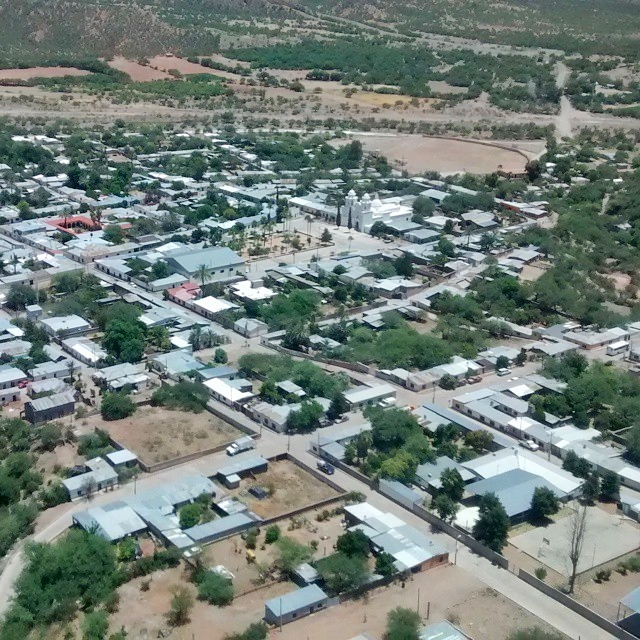By Straquez
The Colonial Years
Of course, Mexico has been in the front line of atrocities and destruction that come out of mining. Mexico is a land blessed with wide biodiversity that includes minerals that have caught the attention of foreign companies who then act as the machinery to do what this industrial culture does best –converting the living into the dead. High revenue for the company stakeholders, negative benefit for the inhabitants and nothing but endless destruction for the land.
It is said that Aztecs used to embellish and protect their bodies with jewelry, such as necklaces with charms and pedants, armlets, bracelets, leg bracelets, and rings. They would also use tools and vases fabricated with precious metals like gold and silver. These metals were found in deposits located on the surface and not underground like nowadays, this allowed the usage of such mineral resources without much effort or effect.
In 1521, Tenochtitlan, the Aztec capital, was taken over by the Spanish army consolidating Mexico’s Conquest. From then on, mining as an industry started in Mexico as Spaniards started to exploit places where mineral deposits could be located. Mining was carried out mostly in the North and Center of what is now modern day Mexico. Many important mineral deposits started to be discovered in places that later would become famous as they would generate wealth (for whom?) and human settlements. It was only a matter of time before the land subject to mining would be turned into cities such as Guanajuato, San Luis Potosi, Zacatecas, Taxco, Chihuahua and Durango.
Mines kept spreading and mining created many jobs and wealth (I hate to be repetitive, but whose wealth?). Is there even a mention of all the evils done to the indigenous land and people? Not at all, the history of mining is portrayed as progress, as an unquestionable good thing, as a victory and in no terms as a defeat or loss. The whole History of Civilization is pretty much like that, now that I think of it.
After Independence
When the Independence movement of Mexico started in 1810, mining projects were negatively affected and had to be stopped. It was not until 1823 when the movement ended that mining activity was restarted. Remember that I mentioned my surname Straffon being from Cornwall, England? Well, it was precisely during these years that the British Real del Monte Company was established thanks to English capital. This company provided both technology and workforce, some of it straight from Cornwall to re-establish silver mines located in Real del Monte, Hidalgo. 1,500 tons of equipment including 9 steam engines with their large boilers, 5 for pumping, 2 for crushing ore and 2 for use in powering saw mills; various pumps; large cast iron pipes to connect the pumps to be placed at the bottom of the mines with the surface. And so started the rebuilding and modernization of the district’s mining industry. The Cornish miners had brought the Industrial Revolution to Mexico.
By the beginning of the 20th century, Mexico was entering a major political transformation as new laws and codes were created. During Porfirio Diaz’ administration, for example, most of the railroad infrastructure was built all through the country, focusing on the main mining centers that were already established. Then the American corporations showed up offering the means for better extraction as mines during the times of Nueva España were certainly used, but could not be exploited to their maximum because Spain lacked the technology and resources to do so.
The Fresnillo Company, Mazapil Cooper Co., Peñoles Mining Co., and Pittsburg & Mexico Tin Mining Co. were some of the companies looking to make a profit out of Mexico’s mines. Parallel industries started to rise, the economy diversified and the country’s elite dreamed of Mexico being on its way to becoming a world economy. Metallurgical processes were improved with maximum return on capital and mineral processing efficiency as the main goal. The bonanza would cease somewhat in the 1960s when the mining industry was nationalized and mine administration passed to the charge of Mexican professionals.
Then came NAFTA, and in 1992 mining laws were modified substantially in order to accommodate the demands of big national and transnational corporations. Compared to the prior 300 years, production of gold and silver doubled even though several communities resisted the exploitation. Social and environmental damage increased substantially as a consequence due to legal impunity and the ability of the mining organizations to trample over human rights. The Mexican Mining Law of 1992 is a unique and unconstitutional piece of legislation, and rides roughshod over earlier laws which allowed for judicial challenges and which consequently made it difficult for companies to carry on their business with impunity. The solution of the mining organizations was, of course, to create a whole web of corruption that extends to the three branches of government. We are still living the influence of NAFTA until this very day. Business as usual.

Keep on Digging
Doctor María Teresa Sánchez Salazar has set out very interesting mine “conflict maps” which consider many parameters including land conflict, environmental conflict, social conflict, labor conflict or a combination of those factors. Data shows that 75% of these conflicts have to do with land, that is, land grabs by the mining companies or due to environmental conflicts, and almost 70% of them happen in open-pit mines. Another interesting number – 60% of the conflicts have involved foreign company owned mines.
She adds that there are places where conflict started due to land grab and the subsequent leasing to mining companies and the implementation of ways to displace people from their native lands. Of a total of 181 natural areas, 57 have been leased for mining. Eight of them focus more than 75% of the surface to this activity. Twenty of them have at least 93% of their surface leased. One example is the Rayón National Park in Michoacan, its land is practically 100% leased for mining as well as Huautla Mountain Range that is between Morelos, Puebla and Guerrero.
Safety is also an issue for the Mexican mining sector. There are powerful cartels that have quite an influence in the entire country, including mining states such as Sonora, Chihuahua, Sinaloa and Guerrero. Mines have been object of many armed robberies that have increased during the COVID-19 pandemic. Extortion, threats and employee kidnapping have been the most common crimes reported by the mining companies.
If this was a Robin Hood kind of deal then I should certainly support it, but in the end workers are the most affected, operations are seldom slowed down and the exploitation just does not stop. If the criminal gangs were to take over, not much would change as, let’s be honest, both companies and cartels pretty much operate the same way but at a different scale.
Bacadéhuachi
In times prior to the year 1600, this area was inhabited by Opata indigenous settlements. In the year 1645 a mission named San Luis Gonzága de Bacadéhuachi was founded by the Jesuit missionary Cristóbal García. Its current inhabitants dedicate their lives to taking care of livestock and making cheese, bread and tortillas which are sold among themselves; within the world economy, they don’t have much of a choice. Being only 270 kilometers away from Hermosillo, capital of the State of Sonora, the road takes 5 hours to transit due to the uneven and complex terrain that in turn makes it a dangerous travel.
This town is on the same route of the high mountain range that takes you to Chihuahua, its neighbor state. This is a high-risk road as armed conflicts are constantly raging between groups that are looking to take control of this area. Some months ago, armed men went into the municipality creating such a situation and ending the peaceful environment to the point that the Mexican National Guard and the State Police now have to be constantly present.
Bacadehuachi has around 500 houses, most of them made of adobe, occupied by around 1,083 people according to the The National Institute of Statistics and Geography (INEGI). It has cobblestone roads and few are made of concrete due to the minimal vehicle transit. It is more common to see people on horses or donkeys than in motor vehicles. Everything is around the corner, there are no gas stations nearby. It has 3 municipal police officers that issue around 10 different fines a year. There is only one health center for basic checkups and a doctor is available every 3 days.
Regarding education, only one preschool, one primary school and one secondary school exist. For those who want to receive higher education, their only choice is to go to Granados, a municipality 50 kilometers away from the town. The road is risky to say the least, young students must stay at the neighboring town and go back to their families at the weekends in a municipality sponsored bus. To go to college is a victory, a luxury, a rare occurrence for the townspeople.
Don’t Know What I’m Selling
Miguel Teran is a farmer and former owner of La Ventana ranch. He sold his land to Bacanora Lithium for the Sonora Lithium Project. He asserts that the first explorations started back in 1994. Geologists came to the La Ventana ranch in government cars. They took some soil samples, came back 8 years later, measured the land and after that they never came back. Ten years ago, Bacanora Lithium carried out some studies. They drilled around 115 holes with the permission of Miguel and then they offered to buy the land.
I told them: you know what you’re buying, but I don’t know what I’m selling. Don’t take advantage of me. That’s how the negotiation started, but they wanted to pay as if it was a mere piece of land.”
Miguel wasn’t disappointed yet he acknowledges that he could have made a better deal as he has since found out what treasure lies in the 1,900 hectares that were sold and integrated into the Sonora Lithium Project. For the time being and until the mineral is extracted, Miguel may allow his cows to graze there as stipulated in the contract.
I am within my rights until I get in the way, but I have already bought some land.” Finally, he adds, “sometimes my car battery would fail and they would tell me that I had lithium here, but I only know about horses and chickens; not lithium.”
The Trauma of Our Technological Selves
As a city-dweller, my experience with Nature has been for the most part parks and decorative gardens. Since I live so disconnected from the land itself, I can only enter into relationship with my own species, our creations and the animals we call pets. For a long time I’ve been scared of insects and even though working in a garden has helped diminish the feeling, I still feel uncomfortable in certain scenarios. Soil and its minerals are even weirder to me, because I had never considered them something other than a resource, a component that can be used for my benefit through technology. They don’t seem alive, they don’t seem to have any other purpose than sitting there for us to transform them into something else.
Perhaps my biggest realization during my journey to connect with the land is the enormous damage that Capitalism, Colonialism and Industrialism have inflicted on the planet. It has reached the point that we are also physically, psychologically, emotionally and spiritually bent and broken enough for us to barely notice the indifference and violence around us. Indifference and violence done to each other and to ourselves. And yet, those who notice don’t always take action. Even less, those who know and take action don’t have a clear idea, much less a strategy to stop the abuse.
This is not something that modern technology can fix. Not the electric cars, not the solar cells nor the electric batteries. Not the tote bags and the bamboo toothbrushes that you can use as compost. Our home is being gutted and we just stand there watching, unsure on what to do. When you actually want to stop a killer, you go ahead and do it. You don’t offer knives from recycled metal or whips made out of hemp. You go ahead and put an end to the abuse by neutralizing any capacity to inflict damage that the perpetrator might have. You stop the killing, you stop the behavior, you commit yourself to do so.
Today I read that only 3% of world’s ecosystems remain intact. Civilization is going down regardless of what we do. Nothing can grow indefinitely without collapsing. The real question is what will be left when our civilization goes down. Our struggle resides in stopping it before there is nothing left.
Cristopher Straffon Marquez a.k.a. Straquez is a theater actor and language teacher currently residing in Tijuana, Baja California, Mexico. Artist by chance and educator by conviction, Straquez was part of the Zeitgeist Movement and Occupy Tijuana Movement growing disappointed by good intentions misled through dubious actions. He then focused on his art and craft as well as briefly participating with The Living Theatre until he stumbled upon Derrick Jensen’s Endgame and consequently with the Deep Green Resistance: Strategy to Save the Planet both changing his mind, heart and soul. Since then, reconnecting with the land, decolonizing the mind and fighting for a living planet have become his goals.





Yes, definitely truth in your essay. I’ve been contemplating the same problems for some time now. There just are not any easy answers. Thank you for all your efforts.
Whether environmentalists find themselves pitted against private industry, state and federal governments, or even public opinion, they keep fighting, according to Elizabeth Courtney, executive director of the Vermont Natural Resources Council, because, as she puts it (paraphrasing environmentalist David Brower), “Our victories are temporary, but our defeats are permanent.”
And the battles are everywhere. So we must keep fighting. Solidarity!